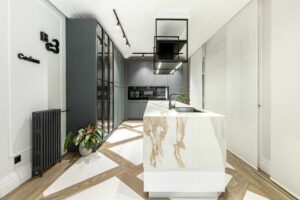In the province of Cuenca, an innovative architectural project is making waves in the design and construction industry: the Mariana Landscape Hotel. This unique resort, located in the Dehesa del Boyal within the Serranía de Cuenca, has recently been awarded in the ‘New Construction Other Uses’ category during the second edition of the Architecture and Urbanism Awards of the Official College of Architects of Castilla-La Mancha (COACM).
This project was executed by G+A Arquitectura, under the leadership of Constantino Antolínez, Eduardo Herrero, and Raúl Cardo, and was promoted by Ecoresort Dehesa Boyal SL. It redefines the concept of tourist accommodations by integrating its structures harmoniously into the surrounding natural landscape. According to the jury, the proposal manages a “disaggregation of the program that integrates the landscape, using a contemporary language.”
The key to the complex’s success lies in its environmentally respectful design, where 16 small-scale buildings, including accommodations and community buildings, are spread out in such a way that they blend in with the environment. To achieve this, materials like wood, concrete, and stone were used, and the structures are elevated from the ground, allowing guests to enjoy the natural surroundings with all the comforts of a four-star hotel.
Thanks to the creative freedom provided by the promoter, Ricardo de Marco of Grupo Prhomarco, the G+A Arquitectura team was able to develop a project that highlights the landscape of the Dehesa del Boyal without significantly altering its essence. The dwellings, equipped with large windows, offer stunning views of the Júcar River, creating a connection between the inside and the dynamic landscape of the grove.
The complex also features community facilities, such as a multipurpose room, designed for educational activities and conferences, establishing itself as a benchmark for environmental activities in the region.
The Mariana Landscape Hotel not only redefines the relationship between architecture and nature but also opens new possibilities for how architectural projects can transform the perception of the environment without modifying it, achieving an integration considered essential by both architects and promoters, for the future of design in natural settings.











